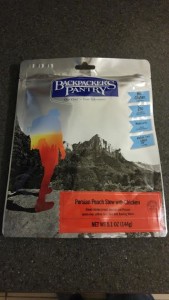Being susceptible to a auditory attack is something few people think about on a daily basis. Unfortunately, there are those out there who seek to attack in stealthy ways and you shouldn’t leave yourself, or your family, in a state of passive vulnerability. Read on and understand the need for protection from damaging sounds that attackers can weaponize.
Sound as a Weapon Part 3: Protection from Damaging Sounds
If you could build a sonic gun it would function much like the design in Figure 1. The frequency generator would be set to produce a single frequency—like a tuning fork. Or it could be designed to produce two frequencies with a warbling sound. Its output would be applied through an amplifier set to the volume (dB intensity) desired. The amplifier output would pass through a tube-like barrel to focus the sound wave into a narrow beam—a directed sound beam.

Fig-1 Sonic Gun
The enclosure would be protected by a sound insulating material so the only energy released is at the focus horn. The output of this sonic gun could then be used for protection based on the frequency and decibel intensity produced. Its range could be adjusted using the amplifier controls.
Generating a sound signal with a sonic gun to protect you and your family from threat is one thing, and it’s important to keep all of you from exposure to harmful sound waves. Protection from sound waves generated by an adversary is another issue. Both events require protection from sonic energy that can cause harm. You must protect you and yours—not the threat.

What is sound?
Whether we can hear it or not, sound is a wave of energy with frequency and amplitude components. This energy is produced by a vibrating source that causes the medium around it to vibrate with an effect that travels in all directions away from the source of the sound—unless the direction is controlled like the focus horn in Figure 1. If it’s audible, any ear in the path will vibrate in unison, causing the inner ear to vibrate sending tiny electric signals to the brain where it’s interpreted as sound.
Sound requires a medium such as air, glass, metal, or liquid to exist. (The English scientist, Robert Boyle showed that sound waves can’t exist in a vacuum.) The sonic energy from a source travels in a straight line, thumping energy through the medium and vibrating the medium in the same direction as the wave’s travel. But the path of the sound wave can be altered by temperature, humidity, nearby objects, various materials, and by various surface shapes.
Here’s what I found during my research:
Once a sound wave is created, it will travel at a speed determined by the medium. At sea level, sound travels through the air at approximately 340 meters per second (760 miles per hour). In sea water, sound travels at 1531 meters per second (3,425 miles per hour). And it travels at 5950 meters per second (13,310 miles per hour) through granite rock—close to its speed through steel (5960 meters per second). Its speed through wood is between 3850 and 4670 meters per second—861 miles/hour and 1,045 miles/hour respectively.

The propagation of sound is affected by reflection, interference, refraction, and diffraction:
Reflection means the wave can bounce off a surface like an echo.
Interference occurs when a sound wave encounters an obstacle in its path, or when other sounds are present, such as the sound of rain or wind.
Refraction is a change in the direction of a sound wave at it travels at different speeds along the movement of the wave front.
Diffraction is the spreading of a sound wave as it bends around the edge of an obstacle in its path.
Your goal is to reduce the sound energy to a minimum so it can’t hurt you. There are several ways to reduce the sound pressure reaching you—increase the distance between the source and you, dampen or block the sound waves, absorb some of the sound, or reflect the sound up and away.
Using Distance to Reduce Sound at your Ears
A sound wave loses energy as it travels through a medium. By doubling the distance between the source of the sound and yourself, the intensity of the sound is reduced by 6 decibels. Every doubling in distance reduces the sound by another 6 dB. This is shown in Table 1 below.
Table 1
Reduction in Sound Intensity as Distance Increases

If you wanted to reduce the power of a sound source by 30 dB, increase the distance by 32 meters. Thus, using the above table, a 100 dB sound source—measured 1 meter away and blasting through an environment with an ambient noise level of 65 dB will be reduced by 30 dB to 70 dB (5dB above ambient) simply by placing the listener at a distance of 32 meters (105 feet) from the sound source. Therefore, the farther away you are from a sound source, the lower the intensity that sound is in your ears.
As shown in Table 1, a 100 dB sound can be further reduced to just 46 dB (a 54 dB reduction) by increasing the distance to 512 meters—a full 1,680 feet! This is like reducing the sound of a loud garbage truck to the sound of soft rain at three tenths of a mile away. This table can be extended to a point where little or no sound can be heard. Just increase the distance and reduce the loudness of that sound source.
Other ways to Reduce or Stop Sound?
If you can’t distance yourself from sound, then block it, reflect it away, or attenuate it so much that it is no longer a threat. You can construct your home so sounds are blocked by the material used—think of the adobe and earth berm homes. Their walls are thick and their interiors are quiet.
You could install obstacles between you and the sound source, reflect it away from you—roadway berm walls are constructed to reflect sound away—usually up. A berm barrier around your home could keep loud sounds from reaching you. The barrier wall should be solid and tall enough to block potential sound sources.
You could install materials that absorb sound energy, or you could “decouple” the inside of your home by constructing a room within a room, so vibrating sound energy remains outside your quiet sound sanctuary.
The idea is to take all steps you can to reduce incoming sound. Block sound paths as much as you can, and combine sound reduction techniques where possible. This could include installing material that will absorb or dampen the sound energy that does get in.

Sound Reduction Techniques:
Sound reduction techniques to provide protection from damaging sounds include the installation of floor carpeting, lined drapes, foam ceiling tiles, and insulated double-paned windows. There are also baffles, and wall coverings that reduce the sound energy that gets in and then bounces off walls and other interior surfaces at lower sonic energy.
Cover walls so 25% of every room has drapes, blinds, fabric wall decorations or canvas paintings, and place filled bookcases along the walls, and use deep, upholstered furniture with thick rubber or cork pads on the legs. You can install rubber or cork tile on the backs and shelves of cabinets and picture frames. And you can add insulation inside the walls, ceiling and attic. Insulating the attic and walls—doubling the insulation thickness—can lower the effective sound by 5 decibels.
You can replace hollow-core doors with heavy solid doors that block sounds from getting through and you could add weather stripping to all exterior and interior doors. Caulk all windows and install good weather stripping. Seal any opening that could let sound enter. Since the elements take a toll, consider storm windows and shutters on windows.
You can install flexible rubber threshold door seals or “draft catchers” in the spaces below doors. Likewise, you can also plant conifers and broadleaved trees near your home to help block outside noise. Also, you can use noise-canceling headphones to keep sound waves from reaching your inner ears during moments of sonic threat.
Even the angle of a sound wave as it reaches your home exterior affects the acoustic energy that gets in. Table 2 shows how sound transmission loss is adjusted for the angle of incidence—the more perpendicular to the building, the greater the sound energy. At low angles of incidence, the resultant dB level is reduced (adjusted down).
Table 2
Decibel Level Adjusted for Incidence Angle

A sound source striking a building at an angle of 60 to 80 degrees produces +2 dB more sound energy than it would if it struck at a small angle of incidence.
Absorbing materials soak up incoming sound energy vibrations and convert them into heat. These materials include foam, fiberglass, rubber, or vinyl plastic with ceramic. Any sound that isn’t absorbed is reflected into the room, but this sound travels a longer path so its sonic energy is lower.
Do everything you can do to lower the sound intensity. By reducing incoming sound energy by just 10 dB, you make the sound half as loud. This is shown in Table 3.
Table 3
Equivalent Sound Reduction by dB

How Do Sound Reduction Materials Compare?
Transmitted sounds that pass through ceilings and walls are measured in decibels. So, table 4 shows transmitted sound reductions for various materials.
Table 4
Transmitted Sound Reduction Capabilities

Table 5 describes the percent of sound energy absorbed by various materials. So, just by doubling the amount of insulation in walls and ceilings can reduce sound energy in a room by 5 decibels.
Table 5
Sound Absorption Capabilities

Notice that acoustic foam, ceiling fiberglass, porous fiberglass padding, and fiberglass panels have major impact on reducing sound.
An acoustic soundproofing blanket can reduce sound by 20-40+ decibels. Just reducing the sound energy by 9 dB will eliminate 80% of unwanted sounds.
Sound reduction really works! There are many ways to protect you and your family from damaging sound. Adopt all you can so your home is soundproof and safe. Everyone knows that information is knowledge, and forewarned is forearmed. Keep safe. Be silent and use sound as your friend. In the next article, I’ll describe where you can get sonic weapons and products specifically designed to reduce sound.
Did you enjoy our post on Sound as a Weapon Part 3: Protection from Damaging Sounds? Have you ever experienced sound being used as a weapon in action? We would love to hear your story. You can share your story in the comment section below.

Interested in soundproofing your own home? These could help:
from SurvivalLife http://survivallife.com/sound-weapon-protection-from-damaging-sounds/








































